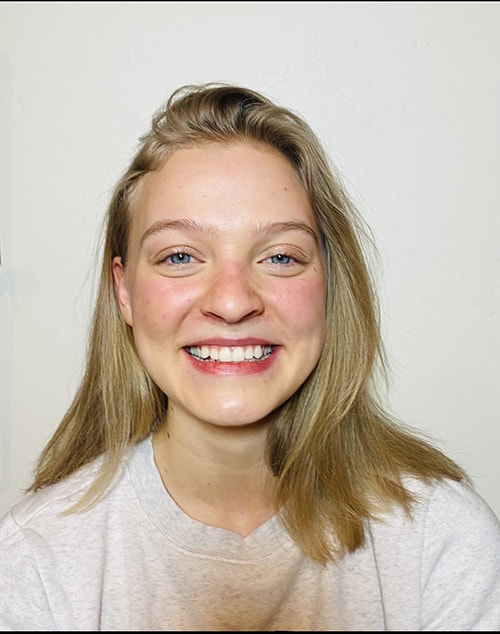View full schedule here.
Adults only. High school students are not eligible to enroll in this program. Learn more.
Credit hours for completing this program can be transferred to UVU. Learn more.
Lehi Campus - Building A
The Radiography Technology program is the first step in your career as a Registered Radiologic Technologist. The primary responsibility of radiologic technologists is to create images of patients’ bodies using medical imaging equipment, such as X-ray, Fluoroscopy, and C-arm imaging. The images that you help create with help medical providers diagnose and treat injuries and diseases. In this program, you will be instructed in classroom and laboratory settings to learn on-the-job skills, and then apply that knowledge in a clinical setting.
You will have the opportunity to gain experience in a variety of healthcare settings including -but not limited to- hospitals, urgent care, and family practice clinics. The experience you will gain at your clinical sites will put you on the path to a successful career as a Radiographic Technologist.



radtech@mtec.edu

katie.hong@mtec.edu
Adults only. High school students are not eligible to enroll in this program.
This program requires an application and students will be notified of their acceptance prior to registration.
Upon acceptance into the program, you will register and submit payment for the first courses in the program. Some fees and materials may be required upfront, while some may be paid later throughout the program.
While not required, you may make a deposit, in person or online, for the full program upon registration to be held in your student account.
Students are required to take Human Anatomy with Lab (ZOOL 2320 & ZOOL 2325) and Human Physiology with Lab (ZOOL 2420 & ZOOL 2425) as part of their elective credits. These courses must be passed with a B- or higher, and taken within the last 5 years of applying to the program.
| SECTION | CAMPUS | ROOM # | START DATE | END DATE | START TIME | END TIME | DAYS |
|---|---|---|---|---|---|---|---|
| Fall 2024 | Lehi Main Campus | 215/216 | 8/19/2024 | TBD | 8:00 AM | 2:30 PM | M,W |
| Schedule Notes: | Students will attend class on their regularly scheduled days, and will do their clinicals outside of that beginning the 2nd week of the program. Clinical shifts may be 8 hours/day for 2 days a week and times may vary depending on the needs of the clinical sites. Classes change to T/Th for 2nd year students. |
Total hours: 1600
| Course Name | Course Hours | Course Credits | Externship/Clinical/ WBL Credits | Tuition ($120/credit hour) | Course Fees | Industry Exam Fee |
|---|---|---|---|---|---|---|
| AHA Basic Life Support for Healthcare Providers | 5 | 0 | X | $20.00 | $29.00 | |
| Radiographic Anatomy & Procedures | 90 | 3 | X | $360.00 | $410.00 | |
| Radiographic Imaging and Exposure Techniques | 90 | 3 | X | $360.00 | $120.00 | |
| Patient Care | 30 | 1 | X | $120.00 | $100.00 | |
| Rad Clinicals I | 270 | X | 6 | $720.00 | $20.00 | |
| Radiology Physics | 30 | 1 | X | $120.00 | $165.00 | |
| Rad. Anatomy & Procedures II | 90 | 3 | X | $360.00 | $10.00 | |
| Radiographic Imaging II | 60 | 2 | X | $240.00 | $10.00 | |
| Rad Protection and Radiobiology | 30 | 1 | X | $120.00 | $100.00 | |
| Rad Clinicals II | 315 | X | 7 | $840.00 | $10.00 | |
| Rad and Pediatric Pathology | 30 | 1 | X | $120.00 | $10.00 | |
| Rad Anatomy & Procedures III | 60 | 2 | X | $240.00 | $10.00 | |
| Alternate Modality and Sectional Anatomy | 60 | 2 | X | $240.00 | $10.00 | |
| Rad Clinicals III | 225 | X | 5 | $600.00 | $10.00 | |
| Registry Review (Hybrid) | 90 | 3 | X | $360.00 | $10.00 | $225.00 |
| Rad Clinicals IV | 125 | X | 2 | $240.00 | $10.00 | |
| TOTALS: | 1600 | 22 | 20 | $5,060.00 | $1,034.00 | $225.00 |
| Tuition/Fees | Cost |
|---|---|
| Tuition: | $5,060.00 |
| Registration Fee: | $40.00 |
| Application Fee: | $30.00 |
| Student Fees: | $1,034.00 |
| Required Materials: | $405.00 |
| Industry Exam Fee: | $225.00 |
| Required Materials | Quantity | Notes (ISBN numbers, etc) | Cost | |||||
|---|---|---|---|---|---|---|---|---|
| Bontrager’s Textbook of Radiographic Positioning and Related Anatomy, 10th Edition | 1 | 978-0-32393-613-2 | included in course fees | |||||
| Bontrager’s Handbook of Radiographic Positioning and Related Anatomy, 10th Edition, pocket size and spiral bound | 1 | 978-0-32393-746-7 | included in course fees | |||||
| Workbook for Textbook of Radiographic Positioning and Related Anatomy 10th Edition | 1 | 978-0323694230 | included in course fees | |||||
| Principles of Radiographic Imaging: An Art and A Science; 6th Edition | 1 | 978-0-35770-467-7 | included in course fees | |||||
| Medical Terminology: A Short Course | 978-0-32347-991-2 | included in course fees | ||||||
| Scrubs | 2 | Cost may vary; Students will order their scrubs through Logo It On according to the program scrub store | $100.00 | |||||
| DOPL Application Processing Fee | 1 | paid to DOPL, required for license | $70.00 | |||||
| Lanyard/Badge Holder | 1 | $10.00 | ||||||
| ARRT Certification Exam | 1 | $225.00 | ||||||
| Total Cost of Required Materials | $405.00 |
| Optional Materials | Notes (ISBN numbers, quantity, etc) | Cost | ||||||
|---|---|---|---|---|---|---|---|---|
| Radiographic Imaging and Exposure, 6th Edition | 978-0-32366-139-3 | $65.50 | ||||||
| Patient Care in Radiography, 10th Edition | 978-0-32365-440-1 | $42.00 | ||||||
| Radiation Protection in Medical Radiography, 9th Edition | 978-0-32382-503-0 | $46.00 | ||||||
| Radiologic Science for Technologists, 12th Edition | 978-0-32366-134-8 | $110.00 | ||||||
| Total Cost of Optional Materials | $263.50 |
At MTECH, you will join an exclusive group of graduates who benefit from a commitment to excellence shared by everyone at the school. From instructors who deliver a relevant, industry-driven curriculum to academic counselors focused on ensuring you have the tools you need to succeed, we all share the same goal: your success as a student.
To apply to our Radiography Technology program, you must complete ONE of the following options regarding prerequisites:
Option 1
Option 2
Application deadlines can be found on this page under “Registration Availability”.
Fall start is February 15th to March 15th.
The program will be 1600 hours or approximately 16 months straight through. MTECH is a year round school. Since we are a year round school, we do not operate like normal colleges with semesters and breaks. At MTECH, we have short breaks (2-5 days long) 3-5 times a year. MTECH also gives students all major holidays off. See the MTECH academic calendar for more information.
We have clinical sites set up between Salt Lake City and Salem. Your clinical site will be chosen for you by the program coordinator and/or clinical supervisor.
This is the program page for the Radiography Technology program. You can find more information about the Limited X-ray Technology program here.
Yes, our program has the same curriculum requirements that the other programs use. Our program concentrates on the technical aspect of the program while other programs may require you to take courses that help you graduate with your degree. All programs, however, will educate their students so that they are prepared to take their national registry boards governed by the ARRT.
The Radiography Technology program is accredited by the Commission of the Council on Occupational Education (COE) and recognized by the American Registry of Radiologic Technologists.
Yes, you can still apply to the program while you are finishing up the last of your requirements. You will need to have all requirements completed by the end of your Spring Semester (April/May/June). Your offer to the program will also be contingent based upon the grades you receive and/or the degree you complete.
Reach out to the College/University’s Alternate Modality program you are interested in and they will be able to tell you what is required to apply to their program.
MTECH doesn’t offer any alternate modality programs but our Radiography Technology program satisfies the Radiography Technology program requirement that most schools require.
| Cookie | Duration | Description |
|---|---|---|
| cookielawinfo-checkbox-analytics | 11 months | This cookie is set by GDPR Cookie Consent plugin. The cookie is used to store the user consent for the cookies in the category "Analytics". |
| cookielawinfo-checkbox-functional | 11 months | The cookie is set by GDPR cookie consent to record the user consent for the cookies in the category "Functional". |
| cookielawinfo-checkbox-necessary | 11 months | This cookie is set by GDPR Cookie Consent plugin. The cookies is used to store the user consent for the cookies in the category "Necessary". |
| cookielawinfo-checkbox-others | 11 months | This cookie is set by GDPR Cookie Consent plugin. The cookie is used to store the user consent for the cookies in the category "Other. |
| cookielawinfo-checkbox-performance | 11 months | This cookie is set by GDPR Cookie Consent plugin. The cookie is used to store the user consent for the cookies in the category "Performance". |
| viewed_cookie_policy | 11 months | The cookie is set by the GDPR Cookie Consent plugin and is used to store whether or not user has consented to the use of cookies. It does not store any personal data. |